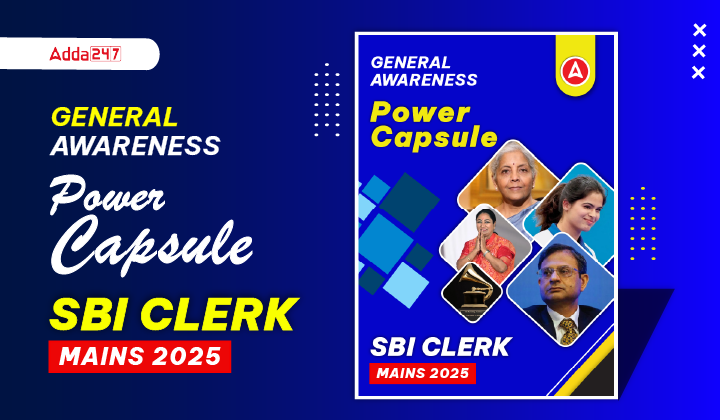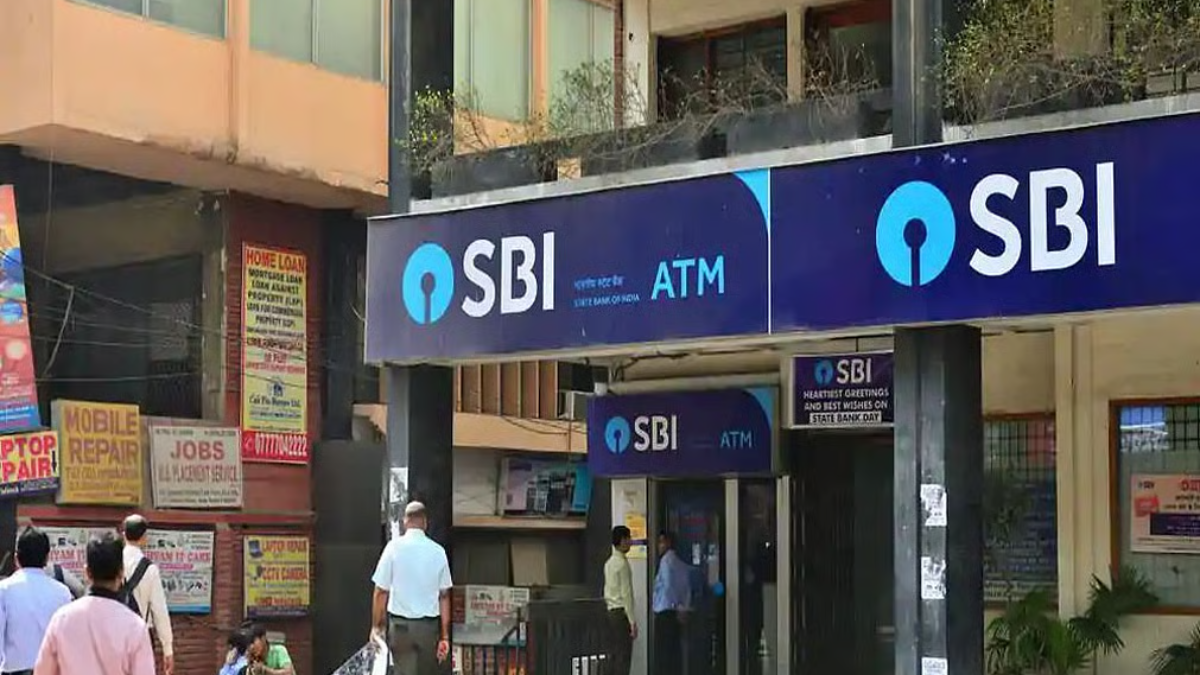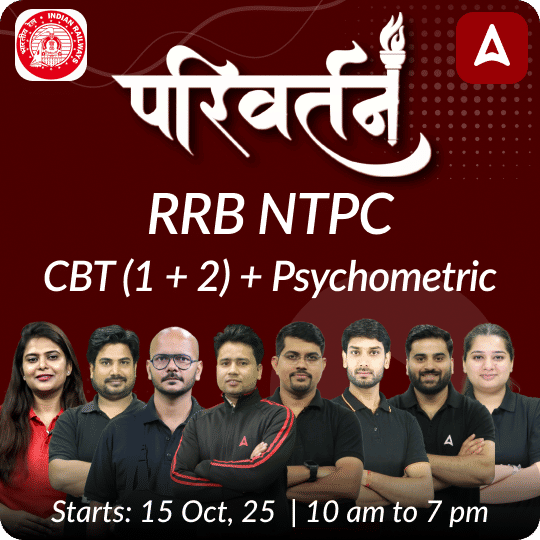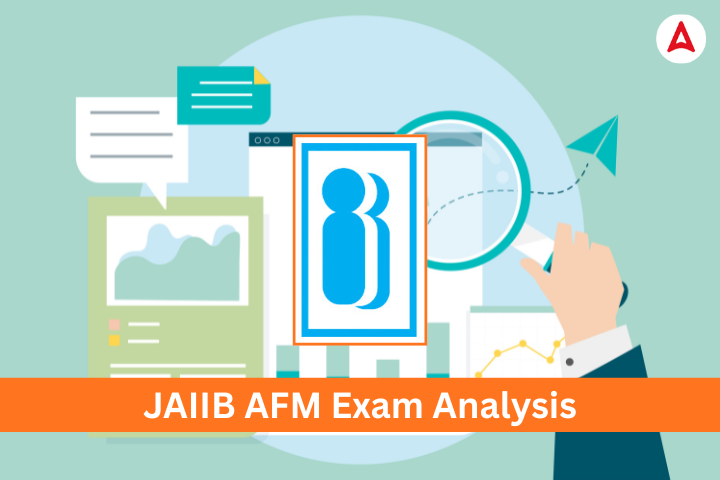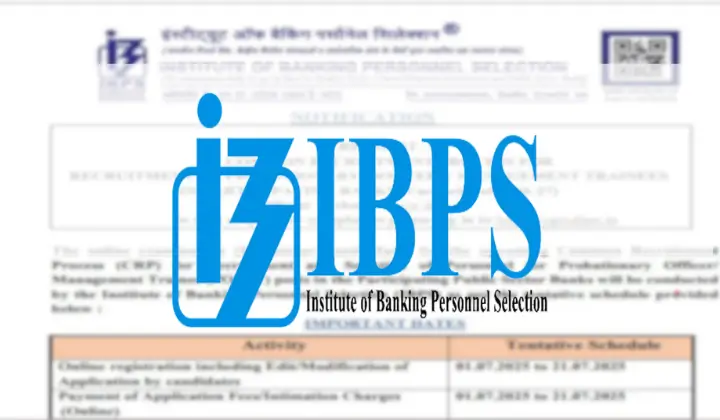The NABARD Grade A Syllabus and Exam Pattern 2025 play a crucial role for candidates aiming to excel in the upcoming examination. Understanding the detailed structure of both Phase 1 (Prelims) and Phase 2 (Mains) helps aspirants plan an effective preparation strategy. The syllabus covers a wide range of subjects, including Reasoning, Quantitative Aptitude, English Language, General Awareness, Economic and Social Issues, Agriculture and Rural Development, and other stream-specific topics.
NABARD Grade A Syllabus 2025
The NABARD Grade A 2025 exam syllabus is divided into Prelims and Mains stages. The Prelims exam tests candidates on Reasoning, English Language, Computer Knowledge, General Awareness, Quantitative Aptitude, Economic & Social Issues, and Agriculture & Rural Development, with a special emphasis on Rural India. The Mains exam evaluates proficiency in General English, Economic & Social Issues, Agriculture & Rural Development, along with subjects specific to the candidate’s chosen role or stream.
Also Read, NABARD Grade A Apply Online 2025
NABARD Grade A Syllabus 2025: Overview
The NABARD Grade A 2025 exam for Assistant Manager posts has been announced, with 91 vacancies. The selection involves Prelims, Mains, and Interview rounds. This table summarizes the important exam pattern, syllabus, and key details for quick reference.
| Category |
Details |
| Exam Name |
NABARD Grade A Recruitment 2025 |
| Posts |
Assistant Manager (Generalist & Specialist) |
| Vacancies |
91 |
| Selection Process |
Prelims → Mains → Interview |
| Prelims |
200 questions, 200 marks, 120 mins, Negative marking: 0.25 per wrong answer |
| Prelims Sections |
Reasoning, English, Computer Knowledge, Quantitative Aptitude, Decision Making, General Awareness, Economic & Social Issues, Agriculture & Rural Development |
| Merit Consideration |
Marks in General Awareness, Economic & Social Issues, Agriculture & Rural Development only |
| Mains – Generalist |
Paper I: General English (Descriptive, 100 marks), Paper II: Economic & Social Issues + Agriculture & Rural Development (Objective + Descriptive, 100 marks) |
| Mains – Specialist |
Paper I: General English, Paper II: Stream Specific Paper (Objective + Descriptive) |
| Interview |
Marks: 50–100, Hindi/English, assesses knowledge & awareness |
| Syllabus PDF |
Available for all streams: General, Agriculture, Engineering, Animal Husbandry, Finance, Forestry, Horticulture, Soil Science, Water Resources, IT |
NABARD Grade A Exam Pattern 2025
The NABARD Grade A 2025 exam consists of two stages. The first stage is the Prelims exam, which is conducted online and consists of 200 Multiple Choice Questions (MCQs). Candidates have 2 hours to complete the exam. The second stage is the Mains exam which includes two papers (Paper I and Paper II). Each paper has a duration of 90 minutes. Candidates need to qualify in both the Prelims and Mains exams to move forward in the selection process for the NABARD Grade A positions.
NABARD Grade A Phase 1 Exam Pattern 2025
The NABARD Grade A 2025 Prelims exam consists of 8 sections and all section with their questions and marks has been given in the table form below. The exam has a total of 200 questions to be completed in 2 hours. Candidates should note that 0.25 marks will be deducted for each incorrect answer.
| NABARD Grade A Phase 1 Exam Pattern 2025 |
| S.No. |
Name of the Test |
Questions |
Marks |
Version |
Total Time |
| 1 |
Test of Reasoning |
20 |
20 |
Bilingual – Hindi and English except for the English language Section |
Composite time of 120 Minutes for all the tests together |
| 2 |
English Language |
30 |
30 |
| 3 |
Computer Knowledge |
20 |
20 |
| 4 |
Quantitative Aptitude |
20 |
20 |
| 5 |
Decision Making |
10 |
10 |
| 6 |
General Awareness |
20 |
20 |
| 7 |
Eco & Soc. Issues (emphasis on Rural India) |
40 |
40 |
| 8 |
Agriculture & Rural Development (emphasis on Rural India) |
40 |
40 |
| Total |
200 |
200 |
|
|
Marks Obtained in General Awareness, Economic & Social Issues and Agriculture & Rural Development are considered for Merit, Other Sections viz. Reasoning, English, QA, Computer & Decision Making are Qualifying in nature. Candidates are selected for the main exam based on the marks obtained in the Merit section only.
NABARD Grade A Phase 2 Exam Pattern 2025
The NABARD Grade A Phase 2 (Mains) exam evaluates candidates in greater depth, focusing on both subject knowledge and writing skills. The exam pattern differs slightly for Generalist and Specialist/Rajbhasha posts, but in both cases, candidates are required to attempt two papers: one assessing General English through descriptive writing, and the other covering role-specific subjects with both objective and descriptive questions.
NABARD Grade A Phase 2 Exam Pattern for Generalist Posts
The NABARD Grade A Mains Exam 2025 will consist of two papers. The First paper will be General English having a weightage of 100 marks with a sectional time limit of 90 minutes. The second paper will be on Economic and Social Issues, and Agriculture & Rural Development having both objective as well as descriptive questions.
| NABARD Grade A Phase 2 Exam Pattern for Generalist Posts |
| Paper |
Grade A |
Type of Paper |
Total Questions |
Total Marks |
Duration |
Remarks |
| Paper I |
General English |
Online Descriptive |
3 |
100 |
90 Minutes |
Descriptive Answers are to be typed using a keyboard |
| Paper II |
Economic & Social Issues, and Agriculture & Rural Development |
Objective |
30 |
50 |
30 minutes |
|
| |
Descriptive Type |
6 questions will be asked, of which candidates will be required to attempt 4 questions [2 of 15 marks each (with difficulty level) and 2 of 10 marks each] |
50 |
90 Minutes |
Descriptive
Answers are to be typed using a keyboard either in English or Hindi (Remington and Inscript keyboards) |
NABARD Grade A Phase 2 Exam Pattern(Specialist/Rajbhasa)
Here, in the following table, the NABARD Grade A Phase 2 exam pattern is given for the Specialists Officers and Rajbhasa. This table give you the information regarding all the details regarding exam pattern.
| NABARD Grade A Phase 2 Exam Pattern for Specialist Officers Posts |
| Paper |
Grade A |
Type of Paper |
Total Questions |
Total Marks |
Duration |
Remarks |
| Paper I |
General English |
Online Descriptive |
3 |
100 |
90 Minutes |
Descriptive Answers are to be typed using a keyboard |
| Paper II |
Stream Specific Paper |
Objective |
30 |
50 |
30 minutes |
|
|
Descriptive Type |
6 questions will be asked, of which candidates will be required to attempt 4 questions [2 of 15 marks each (with difficulty level) and 2 of 10 marks each] |
50 |
90 Minutes |
Descriptive
Answers are to be typed using a keyboard either in English or Hindi (Remington and Inscript keyboards) |
NABARD Grade A Exam Pattern for Protocol & Security
The NABARD Grade A Exam Pattern for Protocol & Security differs from other streams as it includes only an Online Test followed by an Interview. Unlike the RDBS and Specialist streams, this post does not include the mains & descriptive test phase.
| NABARD Grade A Exam Pattern for Protocol & Security |
| Section |
No. of Qs. |
Max. Marks |
Duration |
| Reasoning |
50 |
50 |
120 minutes |
| English |
50 |
25 |
| General Awareness |
50 |
50 |
| Professional Knowledge |
50 |
75 |
| Total |
200 |
200 |
2 hours |

NABARD Grade A Syllabus 2025
As the recruitment will be done based on the prelims, mains, and interview rounds, we are going to provide you with the detailed NABARD Grade A syllabus.
NABARD Grade A Phase 1 Syllabus 2025
The NABARD Grade A 2025 Prelims exam includes 8 sections: Reasoning Ability, Quantitative Aptitude, Computer Knowledge, English Language, General Awareness, Decision Making, Economic and Social Issues, and Agriculture & Rural Development. Below is the detailed subject-wise syllabus for the Preliminary exam:
| NABARD Grade A Prelims Syllabus |
| Quantitative Aptitude |
Reasoning Ability |
English Language |
General Awareness |
Computer knowledge |
| Number Series |
Blood Relation |
Spotting Errors |
Current Affairs |
Networking |
| Quadratic Equations |
Input-Output |
Reading Comprehension |
Banking Awareness |
Input-output devices |
| Simplification & Approximation |
Inequality |
Cloze Test |
Insurance |
DBMS |
| Data Sufficiency |
Puzzles & Seating Arrangement |
Sentence Improvement |
Economy |
MS Office |
| Arithmetic Questions |
Verbal Reasoning |
Fill in the blanks |
Awards and Honors |
History of computers & generations, |
| Data Interpretations and Caselets |
Syllogism |
Sentence Rearrangement |
Science and Technology |
Shortcuts |
| Mathematical Inequalities |
Coding-Decoding |
Para Jumbles |
New appointments |
Internet |
| Quantity Comparisons |
Miscellaneous Questions |
Word Swap and Column |
|
Basic Hardware and Software |
NABARD Grade A Phase 2 Syllabus 2025
The NABARD Grade A mains exam consists of 2 papers, paper 1 consists of the online descriptive test, and paper 2 is an online objective test the detailed subject-wise syllabus of NABARD Grade A 2025 is given below:
Paper 1: Paper 1 includes Essay, Précis writing, Comprehension, and Business/Office Correspondence. The paper on English shall be framed in a manner to assess the writing skills including expressions and understanding of the topic.
Paper 2: NABARD Grade A 2025 Mains (RDBS) Paper 2 for General consists of two subjects. Questions will be asked from Economic and Social Issues and Agriculture and Rural Development (focus on Rural India).
NABARD Grade A Syllabus for Economic and Social Issues
Economic and Social Issues is an important section of the NABARD Grade A Exam. The given table provides the section and their specific topics covering the complete NABARD Grade A Syllabus for Economic and Social Issues.
NABARD Grade A Syllabus For Economic and Social Issues
|
| Subject |
Topics |
| Nature of the Indian Economy |
- Structural and Institutional features
- Economic Underdevelopment
- Opening up the Indian Economy
- Globalization
- Economic Reforms in India
- Privatization.
|
| Inflation |
- Trends in Inflation & their Impact on National Economy and Individual Income.
|
| Poverty Alleviation and Employment Generation in India |
- Rural and Urban
- Measurement of Poverty
- Poverty Alleviation Programmes of the Government.
|
| Population Trends |
- Population Growth and Economic Development
- Population Policy in India.
|
| Agriculture |
- Characteristics / Status
- Technical and Institutional Changes in Indian Agriculture
- Agricultural performance
- Issues in Food Security in India
- Non-Institutional and Institutional Agencies in rural credit.
|
| Industry |
- Industrial and Labour Policy
- Industrial performance
- Regional Imbalance in India’s Industrial Development
- Public Sector Enterprises.
|
| Rural banking and financial institutions in India |
- Reforms in the Banking/ Financial sector.
|
| Globalization of Economy |
- Role of International Funding Institutions
- IMF & World Bank
- WTO
- Regional Economic Cooperation.
|
| Social Structure in India |
- Multiculturalism
- Demographic trends
- Urbanization and Migration
- Gender Issues Joint Family System
- Social Infrastructure
- Education
- Health and Environment.
|
| Education |
- Status & System of Education
- Socio-Economic Problems associated with Illiteracy
- Educational relevance and educational wastage
- Educational Policy for India.
|
| Social Justice |
- Problems of scheduled castes and scheduled tribes
- Socio-economic programmes for scheduled castes, scheduled tribes and other backward classes.
|
| Positive Discrimination in favour of the underprivileged |
- Social Movements
- Indian Political Systems
- Human Development
|
NABARD Grade A Syllabus for Agriculture and Rural Development
The syllabus for Agriculture and Rural Development is vast. To know the detailed NABARD Grade A Syllabus for Agriculture and Rural Development, candidates need to refer the below table.
NABARD Grade A Syllabus For Agriculture and Rural Development
|
| Subject |
Topics |
| Agriculture |
- Definition, meaning and its branches
- Agronomy: Definition, meaning, and scope of agronomy.
- Classification of field crops.
- Factors Affecting Crop Production
- Agro Climatic Zones
- Cropping Systems: Definition and types of cropping systems.
- Problems of dry land – Seed production, seed processing, seed village
- Meteorology: weather parameters, crop-weather advisory
- Precision Farming
- System of Crop Intensification
- Organic farming
|
| Soil and Water Conservation |
- Major soil types
- Soil fertility
- Fertilizers
- Soil erosion
- Soil conservation
- Watershed management
|
| Water Resource |
- Irrigation Management
- Types of irrigation
- Sources of irrigation
- Crop-water requirement
- Command area development
- Water conservation techniques
- Micro-irrigation
- Irrigation pumps
- Major, medium and minor irrigation.
|
| Farm and Agri Engineering |
- Farm Machinery and Power
- Sources of power on the farm- human, animal, mechanical, electrical, wind, solar and biomass, biofuels
- Water harvesting structures
- Farm Ponds
- Agro-Processing
- Controlled and modified storage, perishable food storage, godowns, bins, and grain silos.
|
| Plantation & Horticulture |
- Definition, meaning, and its branches
- Agronomic practices and production technology of various plantation and horticulture crops
- Post-harvest management, value, and supply chain management of Plantation and Horticulture crops.
|
| Animal Husbandry |
- Farm animals and their role in the Indian economy
- Animal husbandry methods in India
- Common terms of different species of livestock
- Utility classification of breeds of cattle.
- Introduction to common feeds and fodders, their classification, and utility.
- Introduction to the poultry industry in India (past, present, and future status)
- Common terms about poultry production and management
- The concept of mixed farming and its relevance to socioeconomic conditions of farmers in India
- Complimentary and obligatory nature of livestock and poultry production with that of agricultural farming.
|
| Fisheries |
- Fisheries resources
- Management and exploitation – freshwater, brackish water, and marine
- Aquaculture- Inland and marine
- Biotechnology
- Post-harvest technology
- Importance of fisheries in India
- Common terms of fish production.
|
| Forestry |
- Basic Concepts of Forest and Forestry
- Principles of silviculture, forest mensuration, forest management, and forest economics
- Concepts of social forestry, agroforestry, joint forest management
- Forest policy and legislation in India, India State of Forest Report 2015
- Recent developments under the Ministry of Environment, Forest and Climate Change.
|
| Agriculture Extensions |
- Its importance and role, methods of evaluation of extension programs
- Role of Krishi Vigyan Kendra’s (KVK) in the dissemination of Agricultural technologies.
|
| Ecology and Climate Change |
- Ecology and its relevance to man, natural resources, sustainable management, and conservation
- Causes of climate change, GreenHouse Gases (GHG), major GHG emitting countries, climate analysis
- Distinguish between adaptation and mitigation
- Climate change impact on agriculture and rural livelihoods
- Carbon credit
- IPCC, UNFCCC, CoP meetings
- Funding mechanisms for climate change projects
- Initiatives by Govt of India, NAPCC, SAPCC, INDC.
|
| Present Scenario of Indian Agriculture and Allied Activities |
- Recent trends
- Major challenges in agriculture measures to enhance
- Viability of agriculture Factors of Production in agriculture
- Agricultural Finance and Marketing
- Impact of Globalization on Indian Agriculture and Issues of Food Security
- Concept and Types of Farm Management
|
| Rural Development |
- Concept of Rural Area
- Structure of the Indian Rural Economy
- Importance and role of the rural sector in India
- Economic, Social and Demographic Characteristics of the Indian rural economy
- Causes of Rural Backwardness.
- Rural population in India
- Occupational structure
- Farmers, Agricultural Laborers, Artisans, Handicrafts, Traders, Forest dwellers/tribes and others in rural India
- Trends of change in rural population and rural workforce
- Problems and conditions of rural labour
- Issues and challenges in Hand-looms
- Panchayati Raj Institutions – Functions and Working.
- MGNREGA, NRLM – Aajeevika, Rural Drinking Water Program, Swachh Bharat, Rural Housing, PURA, and other rural development programs.
|
NABARD Grade A (RDBS) Information Technology Syllabus 2025
There are various topics covered in the subject of Information Technology. For NABARD Grade A(RDBS), we have listed down the Information Technology Syllabus in the given section.
NABARD Grade A(RDBS) Information Technology Syllabus 2025
|
| Subject |
Topic |
| Information Technology |
Introduction to Software, Data Structure through ‘C’ and ‘PASCAL’, Elements of Systems Analysis and Design, Numerical and Statistical Computing, Data Communication and Networks, Computer Architecture, Object-Oriented Systems, Computer Fundamentals, File Structure and Programming in COBOL, Database Management Systems, Software Engineering, Accounting and Finance on Computers, Operating Systems, Intelligent Systems, Relational Database, Management Systems |
NABARD Grade A Legal Service Syllabus 2025
For the specialist cadre in NABARD Grade A, questions from the specific stream are asked. In the given table, we have discussed the NABARD Grade A Legal Service Syllabus.
NABARD Grade A Legal Service Syllabus 2025
|
| Subject |
Topics |
| Legal Service |
The paper will be based on proficiency in interpreting various Laws viz., Banking, Negotiable Instruments, Company, Industrial and Cooperative Laws, Cyber laws, Commerce/Property transactions, Rural non-life insurance, direct financing, staff matters, and good experience in drafting various types of documents. |
NABARD Grade A Interview 2025
Candidates who clear the Prelims and Mains exams will be called for the Interview round.
- The interview will include questions on various topics, including current affairs, to assess awareness and response skills.
- Interview marks:
- 50 marks for RDBS or Rajbhasha posts
- 100 marks for P&SS posts
- Candidates can choose to give the interview in Hindi or English.
- A merit list will be prepared based on the combined scores of the written exams and the interview.
- Candidates who perform well in the interview will move on to the final stages, such as document verification and appointment.

NABARD Grade A Selection Process 2025
The selection process for the posts of NABARD Grade A is given below:
- Phase 1
- Phase 2
- Psychometric Test
- Interview
The selection process for the post of Protocol & Security includes:
- Online Examination
- Interview
NABARD Grade A Syllabus PDF
The NABARD Grade A syllabus is a important resource that every candidate should consider when preparing for the exam. Competition for this position is expected to be fierce, as many candidates are attracted to it due to its promising career prospects. The NABARD Grade A syllabus PDF is a valuable tool for focused preparation. Candidates can check the detailed syllabus for each paper and download the PDF from the links below:
Important Resources for NABARD Grade A Exam 2025
To prepare effectively for NABARD Grade A 2025, candidates should utilize a mix of official materials, reference books, and practice resources. Below are the essential resources:
- Official Syllabus & PDFs: Download the complete NABARD Grade A syllabus and stream-wise PDFs from the official NABARD website to ensure comprehensive coverage of all topics.
- Standard Reference Books: Use authoritative books for subjects like Economics, Agriculture, Rural Development, Finance, and Information Technology to build conceptual clarity.
- Online Mock Tests & Quizzes: Practice regularly with mock tests and online quizzes to improve speed, accuracy, and time management.
- Current Affairs Compilations: Stay updated with monthly or weekly General Awareness capsules, focusing on rural development schemes, economic policies, and banking updates.
- Previous Year Question Papers: Analyze past NABARD Grade A papers to identify trends, frequently asked topics, and question patterns.
- Descriptive English Practice: Enhance writing skills through sample essays, précis writing, comprehension exercises, and business correspondence practice for the Mains descriptive paper.

